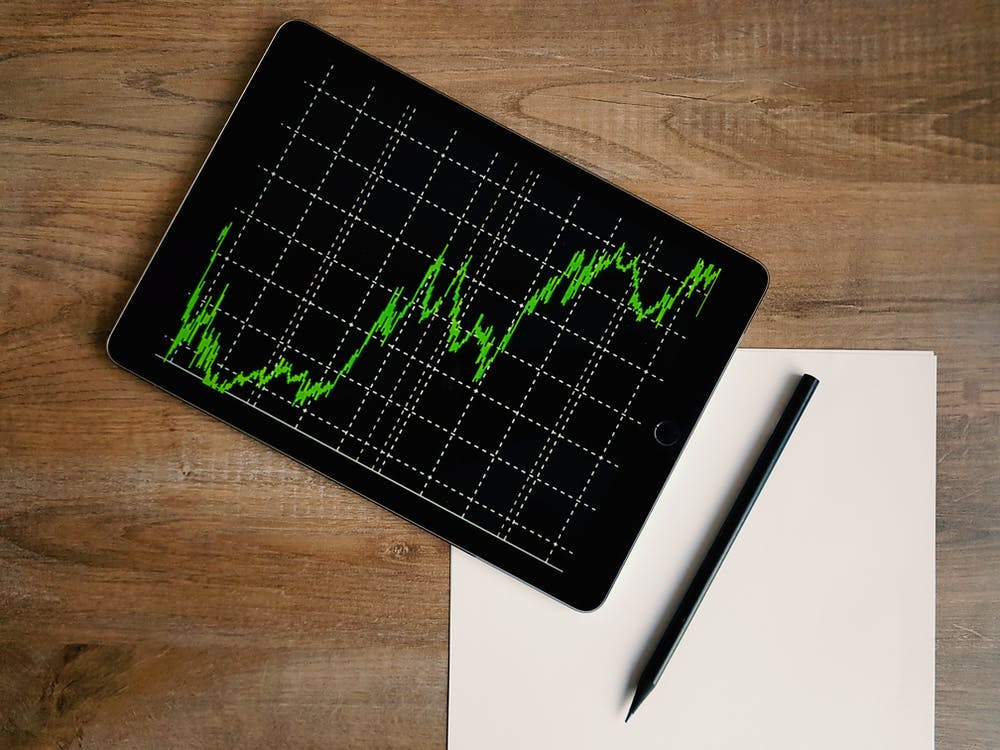E-Mini Futures
This guide explores the essentials for any new investor considering trading E-mini futures. We explain how they work, recent developments, plus the benefits and risks. Contract prices, margin requirements, operating hours, plus trading volumes and liquidity, will also be explained. Find out how to start swing trading E-mini futures today.
What is an E-Mini?
E-mini futures are a type of futures contract, traded electronically, that represent a fraction of the value of a standard contract, hence the name ‘e-minis’. They typically refer to the popular E-mini S&P 500 (ticker symbol ES), first listed, and still heavily traded, on the CME’s (Chicago Mercantile Exchange) electronic trading platforms.

How E-Minis Futures Work
The value of a single contract is 50 times that of the S&P stock index, meaning the contract size is essentially reduced. So in the S&P 500, each point moved is worth $50 per contract. And as the minimum move is 0.25 index points, 1 tick is worth $12.50 ($50 x 0.25). See a live chart for a real-time demonstration.
It is important to note that contract prices, volume, volatility, size, and margin specifications vary between each product and market. For example, the contract price as of 2022 for the E-mini S&P 500 is $4460.75 compared to the $14357.50 for the E-mini NASDAQ 100.
To trade E-minis you also need a futures brokerage account, a charting platform and a trading system. For shorter-term trading strategies like scalping, real-time bar charts that depict second by second fluctuations in the market are important.
History
E-minis were launched on September 9th, 1997 because the S&P 500 futures contract was too large for smaller retail traders. The new E-mini S&P 500 futures contract was broken down to 1/5 of the original S&P contract, providing greater accessibility to the liquid equity index futures market for novice investors.
E-minis were not only a huge success for smaller brokers and traders but also for larger hedge funds and market players as well, which saw the CME list contracts on other major US indices, including the NASDAQ 100, Russell 2000, and Dow Jones. Today, E-minis can also be found on other popular indexes:
- DAX (FDXM)
- Nifty 50 (NM)
- FTSE 100 (FT1)
- Nikkei 225 (ENY)
- Russell 1000 (RF2)
- NASDAQ Biotech (BQ)
- S&P Midcap 400 (EMD)
- S&P Smallcap 600 (SMC)
- NASDAQ Composite Index (QN)
Traders can also find E-mini futures on commodities, including precious metals like gold, silver and copper, soft commodities such as wheat and corn, plus energies like natural gas, crude oil, heating oil and light sweet crude oil. In addition, traders can speculate on forex currency pairs like the US Dollar (USD, Euro (EUR) and Japanese Yen (JPY). See respective exchanges for specific futures symbols.
Note, contract specifications vary between providers but most top brokers offer live, real-time charts to track assets.
E-minis vs Micro E-minis
In May 2019, micro E-mini futures (MES) contracts were introduced onto the CME. As their name suggests, they represent an even smaller fractional value at 1/10 of a standard futures contract, meaning that in this case, each 1 point move in the S&P 500 index is worth $5 per micro E-mini contract, compared to $50 per E-mini contract. This provides novice traders as well as professionals with an even more accessible entry into popular futures markets.
Benefits of Trading E-Minis
- Leverage – The top brokers and platforms over leveraged trading. This means that, for a small capital outlay, you can increase your position size and profit potential. On the downside, this also magnifies your risk exposure. Sign up with a company that offers negative balance protection to ensure you can’t lose more than account balance.
- Cost – E-minis gives brokers and traders access to major financial markets without the upfront financial commitments of full-size contracts. They are also often traded in high volumes with the resulting liquidity leading to tight bid/ask spreads.
- Availability – E-mini trading is available almost around the clock with a break between 4 – 5 pm CT scheduled each day. This means traders can respond to any price changes on their charts throughout the week.
- Trading access – The electronic nature of E-minis means that trading occurs in a fast-paced, often close to instant environment. This creates a more convenient futures market that can save time and money.
- Flexibility – As E-minis divide standard futures contracts into smaller portions, there is more flexibility for beginners while adding deeper liquidity to the markets.
Risks of Trading E-Minis
- Volatility – Due to the nature of electronic markets, the price of E-mini futures contracts can move quickly which may lead to large losses for inexperienced traders. As a result, investors should make sure they have a suitable risk management strategy in place and watch the E-mini symbol list carefully.
- Overtrading – With such an active market and plenty of chances to buy and sell E-mini futures, investors are at risk of overtrading, especially with a wealth of compelling S&P 500 historical data readily available. This reiterates the importance of adopting an effective money management system.

Comparison to Other Assets
Whilst E-mini futures have their strengths, how do they stack up against other popular financial instruments?
- Forex – With daily forex trading volumes exceeding $6.6 trillion, FX is the most popular financial market globally. This means plenty of trading opportunities for retail investors spanning major pairs like the EUR USD, plus minors and exotics. With that said, delays in banks sharing complete volume data can leaves traders a step behind institutional investors in identifying patterns and trends.
- Stocks – Stocks and shares are a good option for new traders as individuals may already understand a particular brand’s business model, such as Tesla. There is also a wealth of publicly available information to help make future price forecasts. On the downside, stock prices are reactive with news headlines often sending prices unexpectedly tumbling.
- Commodities – Unlike E-minis, the volatility of commodities can often swing from being either too low or too high. Markets are also dominated by professional traders with specific product expertise. This can leave beginner retail investors at a disadvantage.
- Options – While not too dissimilar from futures contracts, options give the contract holder the right but not the obligation to buy or sell a particular asset, such as gold. However, trading options successfully can prove challenging, with market timing and position sizes needing to combine at the right moment.
Bottom Line on Trading E-Mini Futures
E-minis can be a good option for beginners looking to gain access to large-cap companies on the NASDAQ, for example, with limited bankroll. Retail traders can speculate on a range of markets from biotechnology and utilities select sectors to currencies and precious metals like copper. High liquidity can also help negate the advantage often gained by larger traders and hedge funds with serious capital behind them. Sign up with one of the best E-mini futures brokers in 2025 to start trading today.
Note, a free practice account can be a good way to test Emini trading strategies and systems on different platforms. They can also help you get familiar with S&P 500 margin requirements and leverage options, while giving you exposure to contract specifications, trading hours and other volume traders.
FAQ
How Much is 1 E-mini Contract?
1 E-mini contract is typically worth 50 times the S&P 500 index value. It’s also worth noting that E-minis move in 0.25 point increments, so one of these movements equals $12.50 while a one-point shift, which is four ticks, results in either a $50 gain or loss.
Can I Trade E-minis on the S&P 500?
Yes, E-mini futures are available on the S&P 500 at supporting brokers and exchanges. Details of weekly options settlements, price quotes, alongside trading definitions and holiday hours can be found on broker websites.
Can I Trade E-minis on the NASDAQ 100?
E-mini futures can be traded on the NASDAQ under various tickers and symbols, including BQ and QN. A wealth of historical data and contract options are available at the top brokers. The best trading platforms also offer a suite of tools to help with future price forecasts.
Who is Trading E-minis?
Approximately 15 high-frequency trading firms form around one third of the market while over 5,000 professional day traders and position traders make up the remaining two-thirds. Several thousand amateur investors represent just 1% of total trading volumes.
When do E-mini Futures Expire?
Contracts normally rollover to the next active contract. With that said, expiries generally happen each quarter, usually on the third Friday of March, June, September and December. For particularly important rollover dates, it can take place on the second Thursday of March, June, September and December. Note, if it is due to be a Friday, the first Thursday is usually the rollover instead.
